How to Fix UNMOUNTABLE_BOOT_VOLUME BSOD in Windows?
The Unmountable Boot Volume is a BSOD error that occurs when the boot volume is inaccessible for the system. One of the main reasons for this blue screen is a corrupted Master Boot Record (MBR). It is the first sector in the drive that provides information for system booting. If it becomes corrupted, the system won’t boot, which will result in this error message.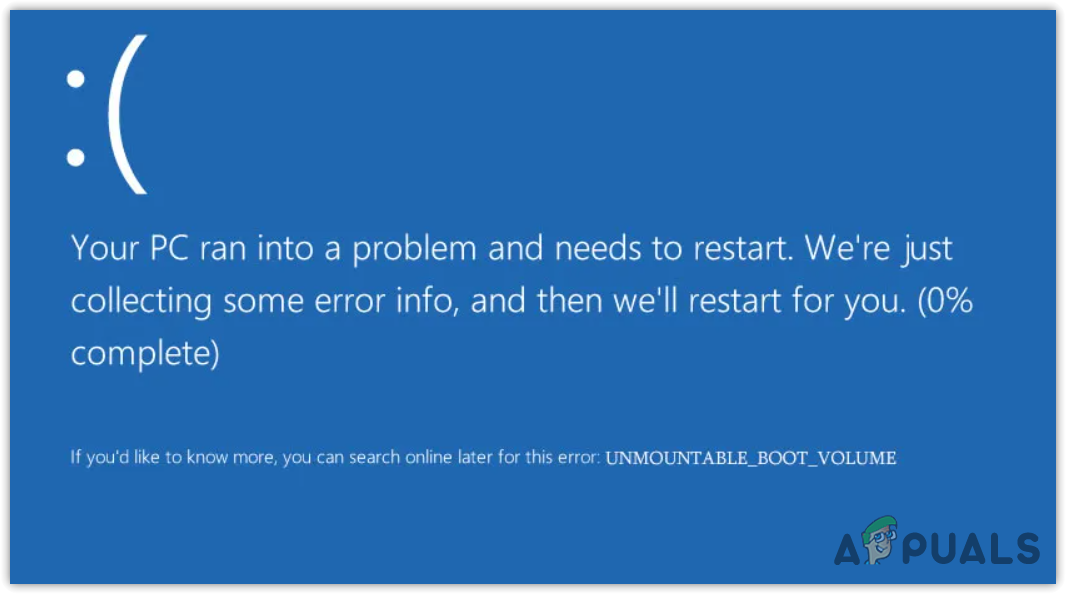
Before jumping to the solutions, make sure to restart your system. If the error persists, then proceed to follow the methods.
Note: Do not skip any of the following methods, because there are various causes of this BSOD error.
1. Use Startup Repair.
The first and basic solution is to use Startup Repair, which fixes specific problems and repairs damaged or corrupted system files, preventing Windows from booting properly. To use Startup Repair, you need to access the recovery options. To do so, follow these steps:
- Turn off your system if it is on.
- Then press F9, F11, or F8 to start the automatic repair. You may have another key that takes you to the automatic repair screen. You can use other function keys if the mentioned keys are not working for you.
- Once the automatic repair fails to fix your Windows, it will display Shutdown and Advanced options. Click on Advanced options to access the recovery options.
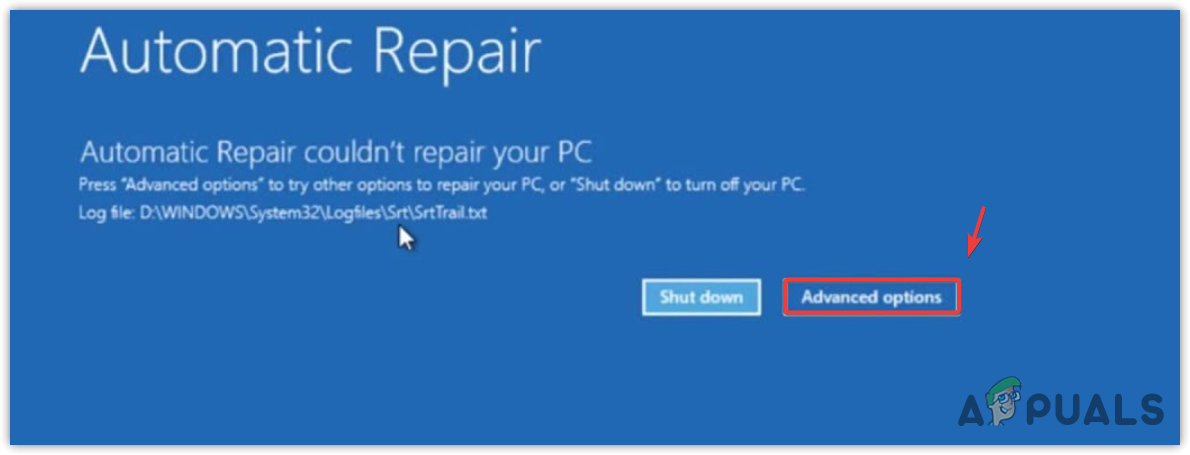 If you still can’t access the Windows recovery environment, turn off your computer by holding the power button, then turn it back on. Repeat this process three times to get the startup repair. Now follow step 3 to get into recovery options.
If you still can’t access the Windows recovery environment, turn off your computer by holding the power button, then turn it back on. Repeat this process three times to get the startup repair. Now follow step 3 to get into recovery options. - Once done, click Troubleshoot > Advanced options > Startup Repair.
- Wait for Windows to be repaired. Then, check whether the issue has been resolved. If not, try other methods.
2. Repair the Master Boot Record.
The Master Boot Record (MBR) is a sector within a disk that stores critical information about the OS used to boot the system. If this sector becomes corrupted for any reason, such as internal problems within the disk or corrupted files, you will be unable to boot Windows. In this case, you can attempt to repair the boot sector by following the provided steps.
- Access the Advanced Options by using the first three steps of method 1.
- Once you have access, click Troubleshoot > Advanced options > Command Prompt.
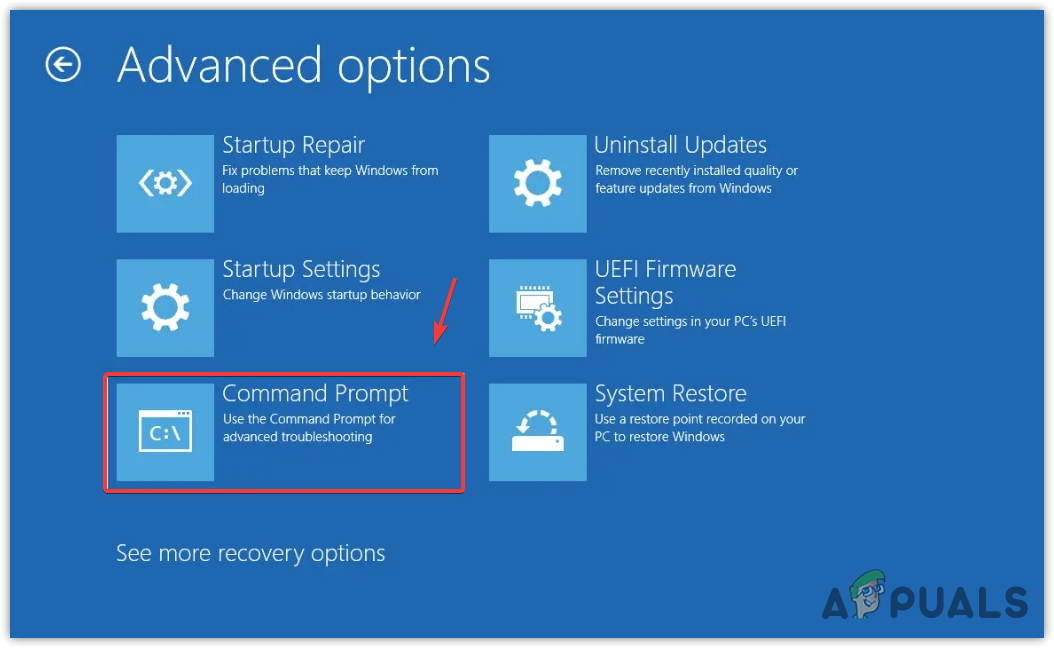
- Wait for the computer to restart; then, enter the following commands one by one to repair the boot sector.
bootrec /fixmbr bootrec /fixboot bcdedit /export c:\bcdbackup attrib c:\boot\bcd -h -r -s ren c:\boot\bcd bcd.old bootrec /rebuildbcd
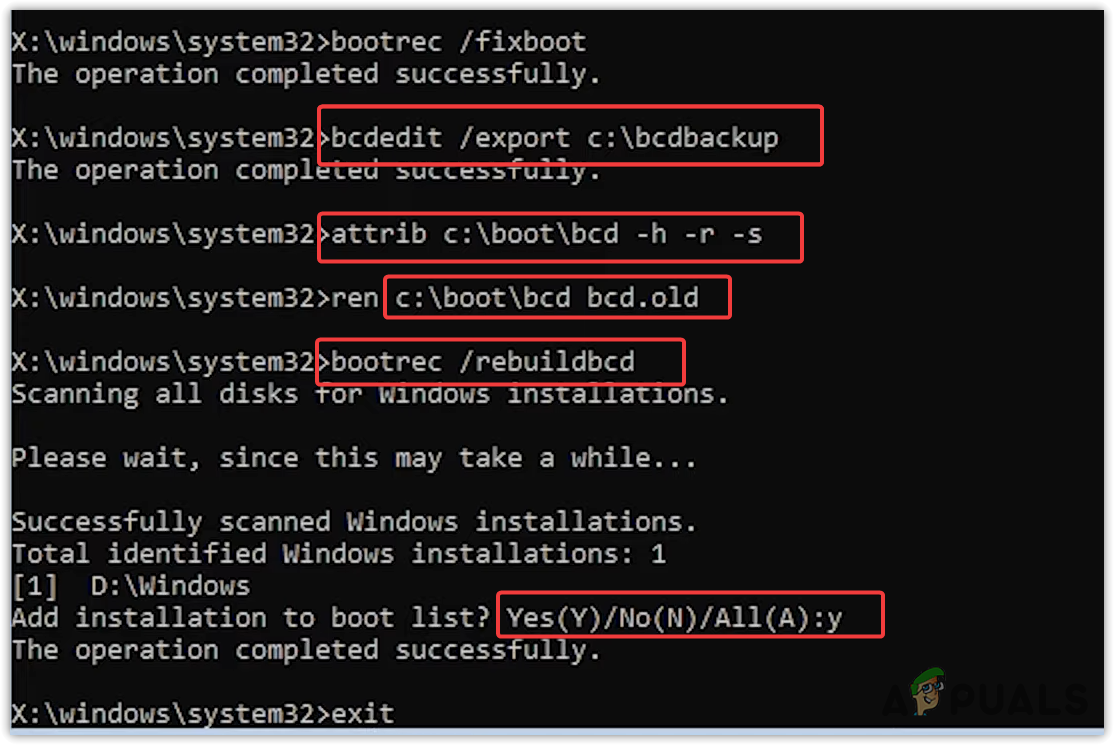
- Once you have repaired the Master Boot Record, close the Command Prompt, and click “Continue” to see if the error is resolved or not.
3. Use a system restore utility.
If you have a restore point created, then it could be the best way to fix this BSOD error. System Restore allows users to save the current state into a restore point. It is a troubleshooting utility that enables users to return to their previous state if something bad happens.
If you haven’t created a restore point, still follow this method, as there are many Windows components and third-party optimization applications that create a restore point for users.
To use a system restore utility:
- Navigate to the Advanced Options by following the first 3 steps of method 1.
- Now select Troubleshoot > Advanced Options > System Restore. Your system will restart to run the System Restore utility.
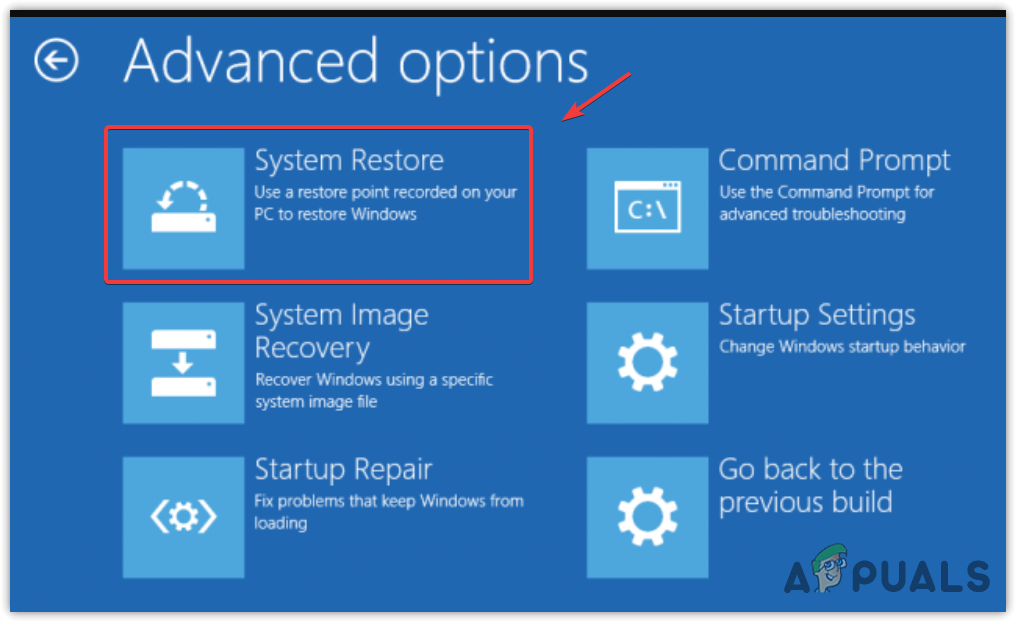 If it says No restore points have been created on your computer, move on to the next method.
If it says No restore points have been created on your computer, move on to the next method. - Click ‘Next‘ to run the utility, then select a restore point, and click ‘Next‘ again.
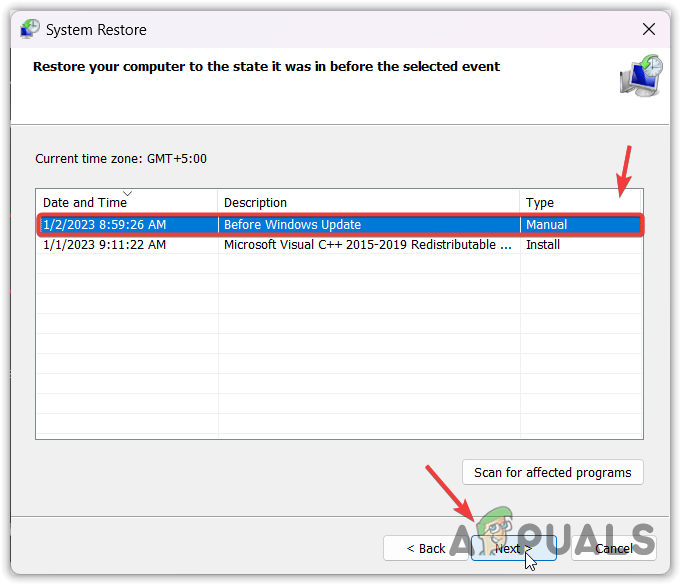
- Click Finish to restore your Windows.
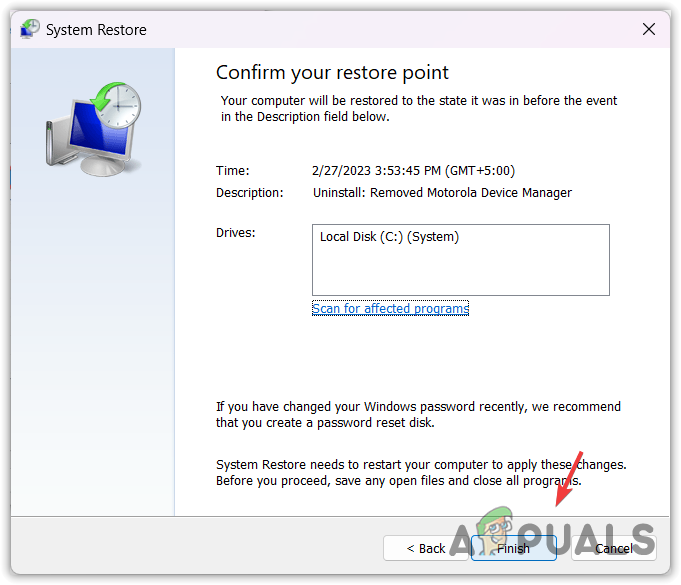
- Once completed, the issue should now be fixed.
4. Run the CHKDSK command.
CHKDSK is a command-line utility that is used to fix bad sectors on the disk. Your system disk may have corrupted sectors, preventing the system from booting. Therefore, try running the CHKDSK utility by following the steps.
- Navigate to the Advanced Options by using the steps from the first method.
- Then select Troubleshoot > Advanced Options > Command Prompt.
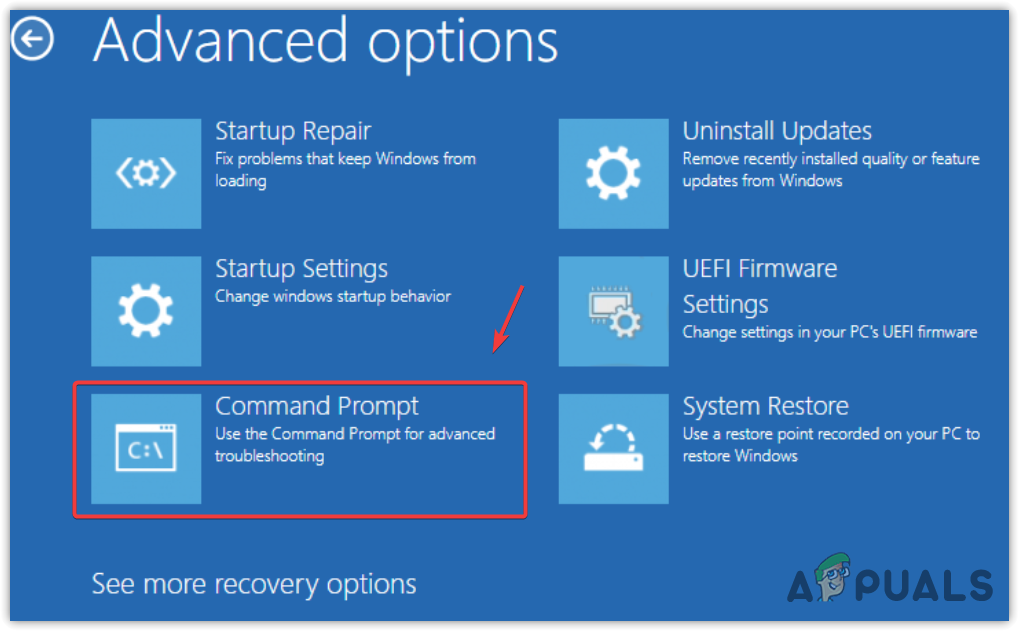
- Once the command prompt is opened, enter the following command and wait for it to execute.
chkdsk /f d:
Note: Replace ‘D‘ with the drive in which Windows is installed.
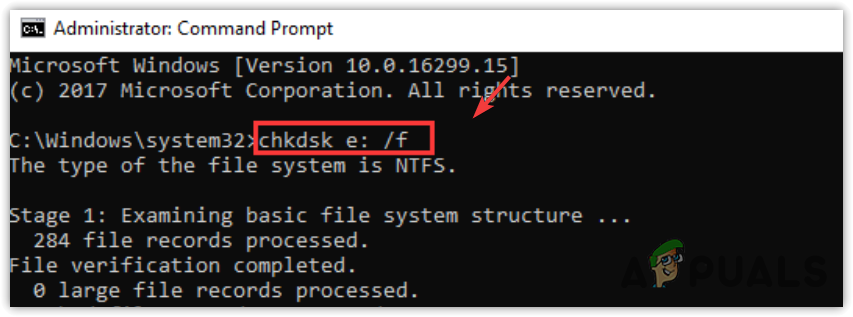 Once completed, close the command prompt and click “Continue” to view the result.
Once completed, close the command prompt and click “Continue” to view the result.
5. Reset your system.
If the error still persists, then the final option you are left with is resetting Windows. Resetting Windows will recreate all the system files on your OS drive, which will fix this issue.
Resetting Windows won’t delete data, such as images and documents, but it will remove drivers, applications, and corrupted system files.
However, if you are unable to reset your system due to an unmountable boot volume BSOD error, in this case, try reinstalling Windows. Refer to this article to reinstall Windows.
To reset your Windows, access the Advanced Options.
- Select Troubleshoot > Reset this PC >Keep my files.
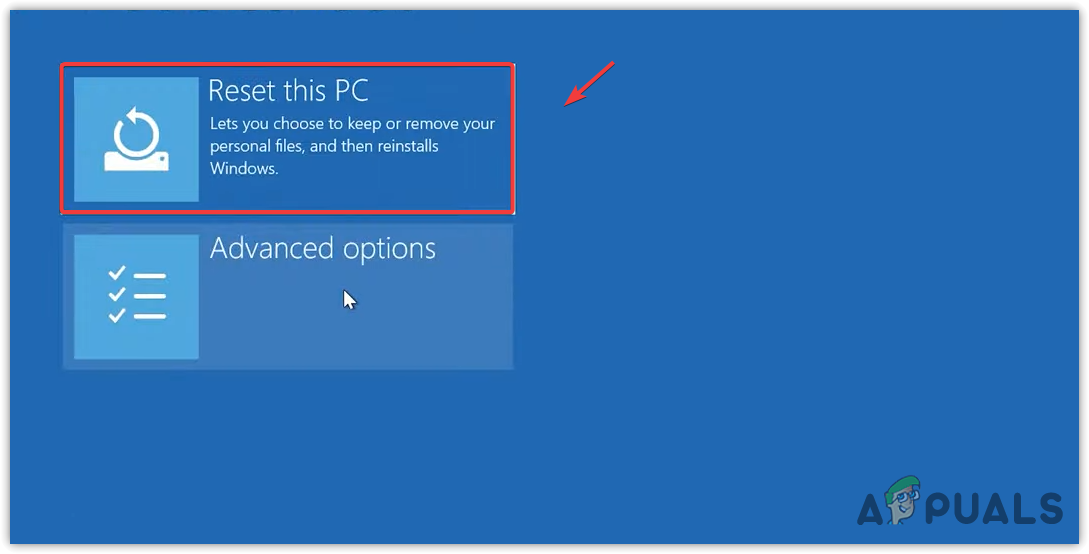
- Then, select Local Reinstall.
- Finally, click Reset to remove everything.

- Once completed, it should fix this error.
6. Diagnose Your System’s Disk
According to reports from affected users, they are unable to reset or reinstall Windows. If you are one of them, you may have a hardware problem in your system disk.
In this case, you will need to diagnose your system disk by removing it and connecting another one to install Windows. If you do not have another disk, you can use the one already connected to your computer, but be sure to back up the data first.
Unmountable Boot Volume- FAQs
To fix this error, you need to repair your Master Boot Record, which is located in the system disk and responsible for booting the OS.
There are various different reasons for this error, but mainly, it occurs when Master Boot Record gets corrupted. It is one of a sector in the system disk that boots the OS. To fix this, you will have to repair Master Boot Record.





